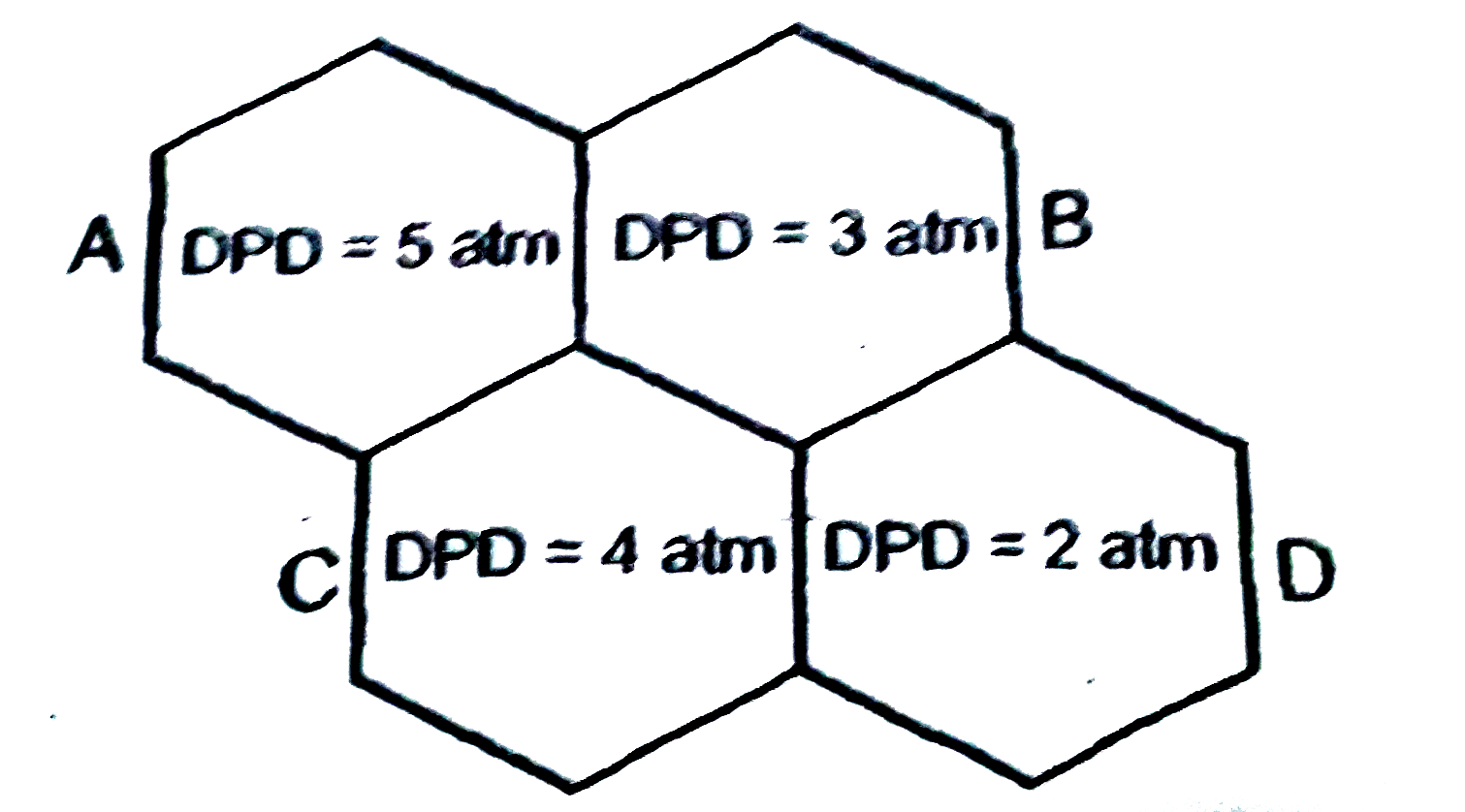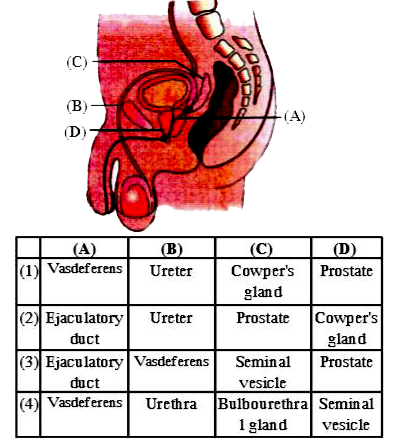A basic communication system consists of (A) transmitter (B) information source (C ) user of information (D)channel (E ) receiver
Choose the correct sequence in which these are arranged in a basic communicarion system.
ABCDE
BADEC
BDACE
BEADC
The correct Answer is:B
To determine the correct sequence of components in a basic communication system, we can follow these steps:
1. Identify the Components: The basic components of a communication system are:
- Information Source (B)
- Transmitter (A)
- Channel (D)
- Receiver (E)
- User of Information (C)
2. Understand the Flow of Information:
- The process begins with the Information Source (B) which generates the information that needs to be communicated.
- This information is then sent to the Transmitter (A) which converts the information into a signal suitable for transmission.
- The signal is then sent through a Channel (D), which can be any medium (like optical fiber, radio waves, etc.) that carries the signal from the transmitter to the receiver.
- Upon reaching the destination, the Receiver (E) captures the transmitted signal and converts it back into a form that can be understood.
- Finally, the information is delivered to the User of Information (C), who utilizes the information.
3. Sequence Arrangement:
- Based on the flow of information, the correct sequence is:
1. Information Source (B)
2. Transmitter (A)
3. Channel (D)
4. Receiver (E)
5. User of Information (C)
4. Final Answer: Therefore, the correct sequence in a basic communication system is B, A, D, E, C.
- Information Source (B)
- Transmitter (A)
- Channel (D)
- Receiver (E)
- User of Information (C)
- The process begins with the Information Source (B) which generates the information that needs to be communicated.
- This information is then sent to the Transmitter (A) which converts the information into a signal suitable for transmission.
- The signal is then sent through a Channel (D), which can be any medium (like optical fiber, radio waves, etc.) that carries the signal from the transmitter to the receiver.
- Upon reaching the destination, the Receiver (E) captures the transmitted signal and converts it back into a form that can be understood.
- Finally, the information is delivered to the User of Information (C), who utilizes the information.
- Based on the flow of information, the correct sequence is:
1. Information Source (B)
2. Transmitter (A)
3. Channel (D)
4. Receiver (E)
5. User of Information (C)
Topper's Solved these Questions
- COMMUNITCATION SYSTEMSBOOK - NCERT FINGERTPS ENGLISHCHAPTER - COMMUNITCATION SYSTEMSEXERCISE - CORNER
15 Videos
- COMMUNITCATION SYSTEMSBOOK - NCERT FINGERTPS ENGLISHCHAPTER - COMMUNITCATION SYSTEMSEXERCISE - Introduction
2 Videos
- COMMUNITCATION SYSTEMSBOOK - NCERT FINGERTPS ENGLISHCHAPTER - COMMUNITCATION SYSTEMSEXERCISE - HOTS
20 Videos
- ATOMS BOOK - NCERT FINGERTPS ENGLISHCHAPTER - ATOMS EXERCISE - Assertion And Reason
15 Videos
- CURRENT ELECTRICITYBOOK - NCERT FINGERTPS ENGLISHCHAPTER - CURRENT ELECTRICITYEXERCISE - Assertion And Reason
15 Videos
Similar Questions
Knowledge Check
Which among following is not a basic terminology used in electronic communication systems?
ATransducerBTransmitterCTelegraphDAttenuationWhich among following is not a basic terminology used in electronic communication systems?
ATransducerBTransmitterCTelegraphDAttenuation
Draw a block diagram of a generalized communication system. Write the functions of each of the following:
(a) Transmitter
(b) Channel
(c) Receiver .
View SolutionEndomembrane system consists of many cell organelles and these organelles perform different functions.
Which of the following options represent correct functions of these organelles ?
a. Formation of steroid hormones
b. Formation of glycoprotein
c. Cell plate formation
d. Storage of water
e. Detoxification
f. Digestion
g. Aerobic Respiration
h. Photosynthesis
View SolutionPerhaps, the most commonly used mode of communication involves use of free space as a communication channel between transmitter and receiver. The various possible modes of using of free space have been described below
Ground wave communication : This mode is used for low frequency as at high frequency, losses become large. This is useful for distance of the order of 1 km.
Space wave communication: The signals are transmitted directly from transmitter to receiver. There is no limit to upper frequency, but its range is limited to few hundred kilometers. The range depends on the height of transmitting antenna
Sky wave communication : The signals are sent towards sky They are reflected back towards earth by ionosphere. Its range can be above 500 km. But, very high frequencies (above 10 MHz) are not reflected back. Satellite communication: The signals that cannot be reflected back by ionosphere are reflected back by satellite. Moon is a passive satellite of earth.
The frequency range allotted to FM radio broadcast is 88 MHz to 108 MHz. Which of the following communication channels can be used for its transmission?
A. Sky wave communication only
B. Space wave communication only
C. Satellite communication only
D. Either space wave communication or satellite communication
View SolutionA hypothetical arrangement of plant cell (A,B,C and D) is given below

Find the correct sequence of movement of water using the given values
View SolutionWhich of the following statements are true
(A) The entire process of involuntary response to a peripheral nervous stimulation is called reflex action.
(B)Information regarding changes in the environment is received by the CNS through the sensory organs which are processed and analysed.
(C) Reflex action occurs without conscious effort
(D) Reflex action requires the involvement of a part of the CNS
(E) Signals from sensory organs goes to spinal cord via ventral root. Choose the correct options from given below:-
View SolutionGiven diagram is of human reproductive system. Identify the structures which are marked as A,B, C, D :-

View Solution

_BIO_E05_610_Q01.png)